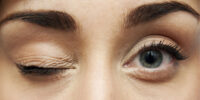Can Floaters and Flashes Indicate a Serious Eye Issue

This article explores the potential connection between floaters and flashes in the eye and the presence of a serious eye issue. Floaters are defined as small specks or strands that drift across the field of vision, while flashes refer to the perception of brief, bright lights.
By understanding the causes and potential underlying conditions associated with floaters and flashes, individuals can better determine when to seek medical attention.
Diagnostic tests, treatment options, prognosis, and prevention strategies will also be discussed.
Key Takeaways
- Floaters and flashes are caused by changes in the vitreous humor inside the eye, with floaters being caused by clumps of protein or other substances in the vitreous and flashes occurring when the vitreous tugs on the retina.
- Floaters and flashes can be symptoms of serious eye issues like retinal tear or detachment, and immediate medical attention is required if there is a sudden increase in floaters or flashes, presence of a curtain or shadow in peripheral vision, or sudden decrease in vision.
- Diagnostic tests such as eye examination, visual field test, and optical coherence tomography (OCT) play a crucial role in diagnosing and managing serious eye issues associated with floaters and flashes.
- Treatment options for serious eye issues include surgical interventions such as cataract surgery and retinal detachment repair, as well as medication options like eye drops or oral medications for conditions like glaucoma or dry eye syndrome. Prompt treatment is important to prevent complications and improve prognosis.
Understanding Floaters and Flashes
Floaters and flashes are common visual phenomena that can be indicative of underlying eye conditions.
Floaters are tiny specks or cobweb-like shapes that appear to float across the field of vision, while flashes manifest as brief flickering lights in the visual field.
Both floaters and flashes are caused by changes in the gel-like substance called the vitreous humor that fills the inside of the eye. As people age, the vitreous humor can become more liquefied, leading to the formation of floaters.
Flashes, on the other hand, occur when the vitreous tugs on the retina, stimulating the visual nerves.
While floaters and flashes are usually harmless, they can sometimes be a symptom of a serious eye condition such as retinal detachment or vitreous hemorrhage.
Treatment options for floaters and flashes depend on the underlying cause and may range from conservative management to surgical intervention.
Causes of Floaters and Flashes
The causes of the visual phenomena characterized by small dark spots or lines and brief bursts of light in the visual field are attributed to various factors.
Floaters are caused by tiny clumps of protein or other substances that form in the jelly-like substance inside the eye known as the vitreous. These clumps cast shadows on the retina, causing the perception of floaters.
Flashes of light, on the other hand, are often caused by the traction or pulling on the retina by the vitreous gel as it shrinks or changes shape. This can stimulate the retina, leading to the perception of flashes.
In some cases, floaters and flashes can be symptoms of a more serious eye issue, such as a retinal tear or detachment. It is important to consult an eye care professional if these symptoms are experienced, especially if they are sudden or accompanied by other visual changes.
When to Seek Medical Attention
It is crucial to consult with a healthcare professional if these visual phenomena occur suddenly or are accompanied by other changes in vision. Seeking treatment is necessary to ensure that any underlying serious eye issues are addressed promptly.
Floaters and flashes can sometimes be harmless, resulting from normal age-related changes in the vitreous gel. However, they can also indicate more serious conditions such as retinal detachment or vitreous hemorrhage.
Warning signs that should prompt immediate medical attention include a sudden increase in floaters or flashes, the presence of a curtain or shadow in the peripheral vision, or a sudden decrease in vision.
Prompt evaluation by a healthcare professional is essential to determine the cause of these symptoms and to initiate appropriate treatment if necessary.
Diagnostic Tests for Eye Issues
This discussion will focus on diagnostic tests for eye issues, specifically examining the types of tests available, the importance of early detection, and the accuracy of diagnostic tests.
Understanding the different types of tests that can be used to diagnose eye problems is crucial for healthcare professionals in order to provide appropriate treatment.
Additionally, recognizing the significance of early detection in preventing further complications is essential for patients.
Lastly, evaluating the accuracy of diagnostic tests is critical for ensuring reliable and effective diagnosis.
Types of Tests
Several types of tests can be used to evaluate the presence of serious eye issues when floaters and flashes are observed. These tests are essential in determining the underlying cause of these symptoms and providing appropriate treatment.
- Eye examination: This comprehensive assessment involves various tests such as visual acuity testing, slit-lamp examination, and retinal examination. It helps to identify any abnormalities in the eye structure and function.
- Visual field test: This test evaluates the full extent of a person’s peripheral vision. It can detect any abnormalities or blind spots that may indicate underlying eye conditions.
- Optical coherence tomography (OCT): This non-invasive imaging test provides detailed cross-sectional images of the retina. It helps to identify any retinal abnormalities or damage that may be responsible for the floaters and flashes.
These tests, when used together, play a crucial role in diagnosing and managing serious eye issues associated with floaters and flashes.
Importance of Early Detection
Early detection of eye issues such as floaters and flashes is crucial for timely intervention and prevention of potential complications. Prompt diagnosis and treatment can help prevent further damage to the eye and improve long-term outcomes. The table below highlights the potential complications that can arise if these symptoms are left untreated.
| Potential Complications | Description |
|---|---|
| Retinal Detachment | Separation of the retina from its supporting tissues, leading to vision loss if not treated promptly. |
| Vitreous Hemorrhage | Bleeding into the vitreous gel, which can impair vision and lead to more serious complications if not addressed promptly. |
| Macular Hole | A hole in the macula, the central part of the retina responsible for sharp, detailed vision, can result in blurred or distorted vision if not treated early. |
| Retinal Tear | A small break or hole in the retina that can progress to retinal detachment if left untreated. |
Early intervention can significantly reduce the risk of these complications and preserve visual function. Consequently, it is essential to seek medical attention promptly when experiencing floaters and flashes to ensure the best possible outcomes.
Accuracy of Diagnostic Tests
The accuracy of diagnostic tests is crucial in determining the presence and severity of eye conditions, allowing for appropriate intervention and prevention of potential complications. Diagnostic tests for eye conditions are designed to provide objective and reliable information about the health of the eye. These tests involve various methods and technologies, including imaging techniques such as optical coherence tomography (OCT) and fundus photography, as well as functional assessments like visual field testing and electroretinography.
The accuracy of these tests is essential for accurate diagnosis and assessment of eye conditions, as it helps in determining the appropriate treatment options. Effective treatment options can be chosen based on the accurate diagnosis, leading to better management and improved outcomes for patients with eye conditions.
Treatment Options for Serious Eye Issues
This discussion will focus on the treatment options available for serious eye issues, specifically surgical interventions and medication options.
Surgical interventions for eyes can include procedures such as cataract surgery, corneal transplantation, and retinal detachment repair. These interventions aim to restore or improve vision by addressing underlying eye conditions or injuries.
On the other hand, medication options for eyes may involve the use of eye drops, ointments, or oral medications to manage various eye conditions, such as glaucoma, dry eye syndrome, or inflammation.
Surgical Interventions for Eyes
Surgical interventions play a crucial role in the treatment of various eye conditions and disorders. These interventions have seen significant advancements over the years, improving both the safety and effectiveness of the procedures.
When considering surgical interventions for eye conditions, it is important to consider post-operative care, as it plays a vital role in ensuring successful outcomes and minimizing complications. Here are three key aspects to consider:
- Surgical advancements:
- Utilization of advanced technologies, such as laser-assisted techniques, for more precise and less invasive procedures.
- Development of innovative surgical instruments and techniques, allowing for improved surgical outcomes and reduced recovery times.
- Integration of artificial intelligence and robotics in surgical procedures, enhancing accuracy and safety.
- Post-operative care:
- Regular follow-up visits to monitor healing progress and address any potential complications.
- Proper administration of prescribed medications to prevent infection and manage pain.
- Patient education on post-operative care instructions, including dietary restrictions and activity limitations.
These advancements and comprehensive post-operative care contribute to the success and improved patient outcomes in surgical interventions for eye conditions.
Medication Options for Eyes
Utilizing appropriate medication options is crucial in the management of eye conditions and disorders. Medications can help alleviate symptoms, reduce inflammation, and prevent further damage to the eyes. However, it is important to be aware of potential medication side effects and consider alternative treatments when necessary.
Below is a table outlining different medication options for various eye conditions:
| Eye Condition | Medication Option | Side Effects | Alternative Treatments |
|---|---|---|---|
| Conjunctivitis | Antibiotic eye drops | Temporary stinging or burning sensation | Warm compresses, artificial tears |
| Glaucoma | Eye drops (beta blockers, prostaglandins) | Redness, stinging, blurred vision | Laser surgery, trabeculectomy |
| Dry Eye Syndrome | Artificial tears, ointments | Temporary blurring of vision | Punctal plugs, lifestyle changes |
| Allergic Conjunctivitis | Antihistamine eye drops | Temporary stinging or burning sensation | Avoiding allergens, cold compresses |
It is important to consult with a healthcare professional to determine the most appropriate medication option and discuss potential side effects and alternative treatments.
Prognosis and Long-Term Outlook
The prognosis and long-term outlook for individuals experiencing floaters and flashes can vary depending on the underlying cause and the individual’s overall eye health. It is important for patients to seek medical attention to determine the cause of their symptoms and receive appropriate management.
Potential complications associated with floaters and flashes include:
- Retinal detachment: This occurs when the retina detaches from the underlying tissue, leading to vision loss if not promptly treated.
- Vitreous hemorrhage: Bleeding within the vitreous gel can cause vision impairment and requires immediate medical attention.
- Macular hole: A hole in the macula, the central part of the retina responsible for clear vision, can result in blurred or distorted vision.
Prognosis management for individuals with floaters and flashes may involve regular monitoring, lifestyle modifications, and, in some cases, surgical intervention. It is crucial for patients to follow their healthcare provider’s recommendations to ensure the best possible long-term outcome.
Prevention and Lifestyle Tips for Eye Health
Prevention and lifestyle tips can play a crucial role in maintaining optimal eye health and reducing the risk of various ocular complications. Preventing eye diseases and maintaining good eye health should be a priority for individuals of all ages.
Regular eye examinations can help detect any potential issues early on and allow for timely intervention.
Additionally, maintaining a healthy lifestyle that includes a balanced diet rich in fruits and vegetables, regular exercise, and adequate rest can contribute to overall eye health.
Protecting the eyes from harmful ultraviolet (UV) rays by wearing sunglasses and avoiding excessive exposure to screens and digital devices can also help prevent eye strain and potential damage.
Lastly, practicing good hygiene by washing hands regularly and avoiding touching the eyes unnecessarily can minimize the risk of infection and inflammation.
Frequently Asked Questions
Are Floaters and Flashes Always a Sign of a Serious Eye Issue?
Floaters and flashes are visual phenomena experienced by many individuals. While they can be alarming, they are not always indicative of a serious eye issue. Common causes include age-related changes in the vitreous humor. Management strategies involve monitoring symptoms and seeking medical advice if there is a sudden increase in floaters or flashes.
Can Stress or Anxiety Cause Floaters and Flashes?
Stress-related eye issues and the impact of anxiety on vision are areas of interest in the study of ocular health. Understanding the potential relationship between stress, anxiety, floaters, and flashes requires further investigation and research.
Can Floaters and Flashes Be a Symptom of a Brain Problem?
Floaters and flashes can be a symptom of a brain problem, such as a brain tumor or a neurological disorder. These visual disturbances should be evaluated by a healthcare professional to determine the underlying cause.
Are There Any Natural Remedies or Home Treatments for Floaters and Flashes?
Natural remedies for floaters and flashes include dietary changes, such as consuming foods rich in antioxidants and omega-3 fatty acids. Home treatments for these symptoms may include eye exercises and maintaining a healthy lifestyle.
Can Floaters and Flashes Be Prevented With a Specific Diet or Exercise?
Preventing floaters and flashes through diet and exercise is an area of interest. Research is limited, but there is some evidence that certain dietary habits and physical activity may reduce the occurrence of these visual phenomena.









